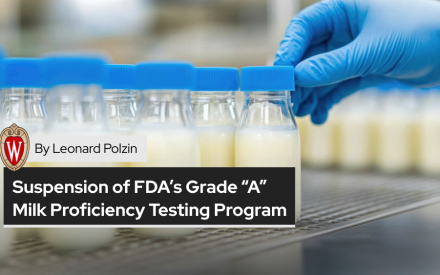Published May 15, 2024
This update aims to provide stakeholders with a comprehensive overview of the current market conditions, facilitating informed decision-making in the dairy sector.
Introduction
The dairy market has exhibited a variety of shifts and trends as influenced by several factors including milk production rates, governmental regulations, and global economic conditions. This report synthesizes data and analyses provided at the end of April and beginning of May to highlight the current state of various dairy product markets—namely cheese, butter, nonfat dry milk, and dry whey.
Milk Production and Regulatory Changes
The USDA’s March Milk Production report highlighted a marginal decline in milk output, primarily due to reduced herd sizes and varying regional outputs. Notably, while California and the Midwest saw increases, significant declines were reported in Texas and New Mexico. These fluctuations are coupled with regulatory changes, including new federal requirements for dairy cow health certifications which could impact inter-state commerce and productivity.
Cheese Market Dynamics
Cheese markets have experienced notable fluctuations with a significant uptick in export activity, particularly to Mexico, driving prices upwards. On May 3, data revealed that cheese exports in March surged to an all-time high of 110 million pounds, a 20% increase year-over-year. This was reflected in the price movements where CME barrels rose sharply, indicative of tight supplies. The convergence of spot and futures markets, a significant development, suggests a shift in market dynamics from excess supply to a balanced or demand-driven market.
Butter Market Trends
Recent concerns over bulk availability have pushed prices to new highs. As of early May, CME spot butter prices exceeded $3 per pound, a record for this time of the year, underscoring ongoing anxiety about sufficient supply amidst stable retail demand. Export volumes, however, have diminished, largely due to high domestic prices discouraging international buyers.
Nonfat Dry Milk (NDM) and Dry Whey
The NDM market has remained relatively stable, albeit at lower prices, with exports showing a downturn of 18% compared to the previous year. This is in contrast to the dry whey market, which saw a slight increase in exports despite overall demand not showing substantial improvement. Both markets are heavily influenced by international demand dynamics, particularly from China, and shifts in global supply chains, notably from New Zealand affecting price and availability.
Conclusion and Outlook
The dairy market continues to be influenced by a complex interplay of regional production changes, regulatory impacts, export dynamics, and global economic conditions. While cheese and butter markets have shown upward price trends due to tight supplies and potentially stronger demand, the nonfat dry milk and dry whey sectors face challenges from international competition and fluctuating demand. Moving forward, global market shifts, domestic demand, and changes in milk production will continue to dominate the day and likely price movements.


 Dairy Market Dynamics and Domestic Constraints: A Dairy Sector Assessment as of June 2025
Dairy Market Dynamics and Domestic Constraints: A Dairy Sector Assessment as of June 2025 U.S.–Canada Dairy Trade Relationship (2025–Present)
U.S.–Canada Dairy Trade Relationship (2025–Present) Suspension of FDA’s Grade “A” Milk Proficiency Testing Program – A Comprehensive Analysis
Suspension of FDA’s Grade “A” Milk Proficiency Testing Program – A Comprehensive Analysis Policies and Regulations Governing Milk and Dairy Testing: A Wisconsin Overview
Policies and Regulations Governing Milk and Dairy Testing: A Wisconsin Overview


